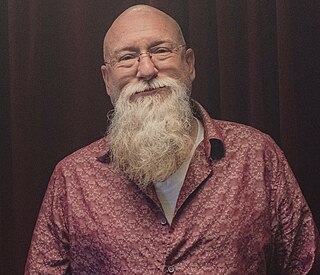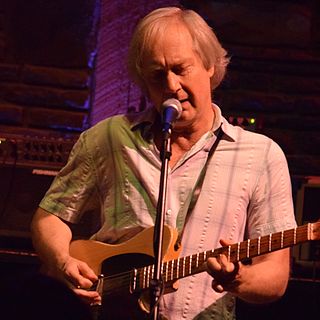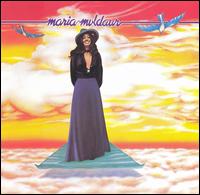Related Research Articles

John Benson Sebastian (born March 17, 1944) is an American singer, songwriter and musician who founded the rock band the Lovin' Spoonful in 1964 with Zal Yanovsky. During his time in the Lovin Spoonful, John would write and sing some of the band's biggest hits such as "Do You Believe in Magic", "Did You Ever Have to Make Up Your Mind", and "Daydream". Sebastian would leave the Spoonful in 1968 after the album Everything Playing. After leaving the Spoonful, Sebastian would focus on a solo career, releasing his first solo album in 1970 titled John B. Sebastian. Sebastian would continue on recording solo albums.

Jericho is the eighth studio album by Canadian-American rock group the Band. Coming seventeen years after their "farewell concert", it was released in 1993 and was the first album to feature the latter-day configuration of the group, as well as their first release for the Rhino subsidiary Pyramid Records.

Eric Andersen is an American folk music singer-songwriter, who has written songs recorded by Johnny Cash, Bob Dylan, Judy Collins, Linda Ronstadt, the Grateful Dead, Rick Nelson, and many others. Early in his career, in the 1960s, he was part of the Greenwich Village folk scene. After two decades and sixteen albums of solo performance, he formed Danko/Fjeld/Andersen with Rick Danko and Jonas Fjeld, which released two albums in the early 1990s.

Stefan Grossman is an American acoustic fingerstyle guitarist and singer, music producer and educator, and co-founder of Kicking Mule records. He is known for his instructional videos and Vestapol line of videos and DVDs.

David Grier is an American acoustic guitarist. A three-time IBMA guitarist of the year, Grier has been lauded as highly influential and a master flatpicker by music publications and several of his colleagues.

James Jeffrey Weider is an American guitarist, best known for his work with the Band. He joined the reformed version of the Band in 1985 to replace original guitarist Robbie Robertson.

Arlen Roth is an American guitarist, teacher, and author. From 1982 to 1992, he was a columnist for Guitar Player magazine. Those ten years of columns became a book, Hot Guitar.

Harry Peter "Happy" Traum was an American folk musician who started playing around Washington Square in the late 1950s. He became a stalwart of the Greenwich Village music scene of the 1960s and the Woodstock music community of the 1970s and 1980s.
Amos Garrett is an American-Canadian blues and blues-rock musician, guitarist, singer, composer, and musical arranger. He has written instructional books about music and guitar. Garrett holds dual citizenship and was raised in Toronto and Montreal. He is best known for his guitar solos on Maria Muldaur's recording "Midnight at the Oasis", and on Paul Butterfield's Better Days recording of "Please Send Me Someone to Love." He has written books about music, such as "Amos Garrett—Stringbending: A Master Class".

Jim Kweskin is an American folk, jazz, and blues musician, most notable as the founder of the Jim Kweskin jug band, also known as Jim Kweskin and the Jug Band, with Fritz Richmond, Geoff Muldaur, Bob Siggins and Bruno Wolfe. The Jug Band was a significant part of the folk and blues revival of the 1960s. Maria Muldaur, formerly with the Even Dozen Jug Band, joined the band in 1963. During the five years they were together, the Jug Band successfully modernized the sounds of pre–World War II rural music.

Arthur Roy Traum was an American guitarist, songwriter, and producer. Traum's work appeared on more than 35 albums. He produced and recorded with The Band, Arlen Roth, Warren Bernhardt, Pat Alger, Tony Levin, John Sebastian, Richie Havens, Maria Muldaur, Eric Andersen, Paul Butterfield, Paul Siebel, Rory Block, James Taylor, Pete Seeger, David Grisman, Livingston Taylor, Michael Franks and Happy Traum, among others. Traum's songs were featured on PBS, BBC, ESPN, CBS, and The Weather Channel. He toured in Japan, Europe and the U.S.

Maria Muldaur is the 1973 debut studio album of musician Maria Muldaur. The album includes "Midnight at the Oasis", her best-known single, which charted at #6 on the Billboard Hot 100 and "Three Dollar Bill", which charted at #7 on the Billboard Adult Contemporary charts. The album, which peaked at #3 on the Billboard 200, was certified gold by the RIAA on May 13, 1974. The album is heavily influenced by country and blues.

David Bennett Cohen is an American musician best known as the original keyboardist and one of the guitar players for the late-1960s psychedelic rock and blues band Country Joe and the Fish.

John James is known, primarily, as a solo acoustic fingerstyle guitarist, composer and entertainer.
Rainbow Quest (1965–66) was a U.S. television series devoted to folk music and hosted by Pete Seeger. It was videotaped in black-and-white and featured musicians from traditional American music genres such as traditional folk music, old-time music, bluegrass and blues. The show's title is drawn from the lyrics of the song by Seeger "Oh, Had I A Golden Thread".

Edward John Renehan Jr. is an American writer, consultant, publisher, and Grammy Award-winning musician.
Home spun literally refers to hand spinning, see spinning (textiles).

Jerome Henry "Butch" Baldassari was an American mandolinist, recording artist, composer, and music teacher.
Christopher Alden Shaw is a folk musician specializing in the music and folklore of the Adirondack Mountains, recognized nationally as a notable practitioner of this milieu. His first album, Adirondack, a collection of traditional and original tunes, was selected for inclusion in the folk music collection of the Library of Congress. "Shaw's new songs sound like ancient ones," said Geoffrey Himes of The Washington Post. The "Ambassador of the Adirondacks" frequently collaborates with his wife, fellow singer-songwriter Bridget Ball. Capital Region Magazine called him "a walking, talking, singing National Geographic Special."
References
- 1 2 Frank Goodman. "Puremusic interview with Happy Traum". puremusic.com. Retrieved July 5, 2017.
- ↑ MacLachlan, Suzanne L. (September 13, 1993). "Homespun Tapes Runs with Music Giants". Christian Science Monitor. Retrieved July 5, 2017.
- 1 2 Cordtz, Kay (July 1, 2011). "Documenting the Greats, Teaching the New: Happy and Jane Traum's Homespun Tapes and Video". Roll Magazine. Retrieved July 7, 2017.
- ↑ staff writer (April 20, 1989). "Tapes Bring Homespun Sound Home". Deseret News. Retrieved July 7, 2017.[ dead link ]
- ↑ Weissman, Dick (2005). Which Side Are You On?: An Inside History of the Folk Music Revival in America (1 ed.). ISBN 9780826416988 . Retrieved July 5, 2017.
- ↑ "Oral Histories: Jane Traum". NAMM.org. Retrieved July 7, 2017.
- ↑ Bessman, Jim (November 8, 1997). "Homespun Turns 30 with CD Instructional, Video Lines". Billboard. Retrieved July 7, 2017.
- ↑ Patience, Iain (March 2, 2016). "Happy Traum Interview". Rhythms. Retrieved July 5, 2017.
- ↑ Van Dyke, Matthew (March 9, 2016). "Hal Leonard & Homespun Celebrate 20 Years Together". Music & Sound Retailer. Retrieved July 7, 2017.